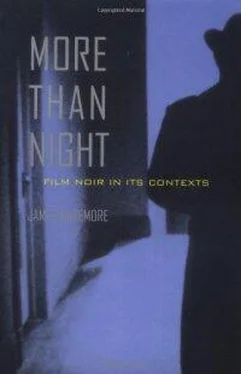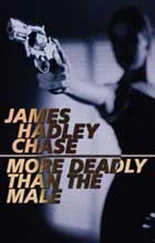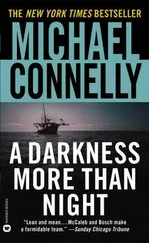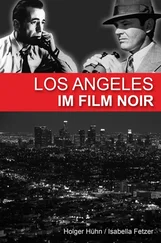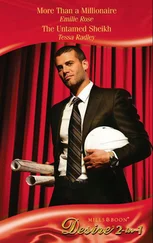Even when film noir is openly hostile toward women or homosexuals, it solicits the psychoanalytic and potentially deconstructive critical discourse that has grown up around it. Moreover, like other Hollywood formulas, it has depended upon contributions by female or gay artists. The only important woman director of the 1940s, Ida Lupino, was responsible for several movies that could be classified as noir, as were women writers such as Daphne du Maurier, Vera Caspary, Dorothy B. Hughes, and Leigh Brackett. One of the most prolific American writers of noir fiction, Cornell Woolrich, was a homosexual, as were directors George Cukor and Vincente Minnelli, who were frequently drawn to noir themes or motifs. In our own day, there have been many examples of hard-boiled detective novels with female, gay, or lesbian protagonists, as well as a number of films noirs directed by women. In the latter group are Maggie Greenwald's Kill-Off (1990), Kathryn Bigelow's Blue Steel (1990), and Lizzie Borden's Love Crimes (1992). The Bigelow and Borden films are intriguing applications of the "exchange of guilt" formula to women characters, but unfortunately their social criticism is undercut by a cliched and overly deterministic psychology. 5A much more interesting exploration of a similar theme is Captives (1996), a British production directed by Angela Pope, which offers a complex study of a love affair between a middle-class woman who has separated from her husband and a prison convict who has killed his wife. On a different level, consider Claire Peploe's lovely tribute to Out of the Past in the comic, magical-realist production of Rough Magic (1997).
As we might expect, film noir's treatment of race leads us to similar conclusions, for if noir is preoccupied with femmes fatales and homosexuals, it is equally preoccupiedand for many of the same reasonswith people of color. I have previously observed that movies of the type often depict Anglo protagonists who visit "exotic" places like Latin America and Asia or who frequent Harlem jazz clubs, the Casbah, and Chinatown. But film noir is not merely an occasion for whites to engage in racist fantasies. Noir flourished in America during the period between World War II and the beginnings of the civil rights movement, when a number of liberal and left-wing filmmakers were attempting to make pictures about racial prejudice and lynchings; moreover, when noir is viewed in a larger historical and cultural perspective, it is not exclusively the product of a white imagination. Virtually every national cinema in the world has made at least a few movies that fall into the category, and in the United States, many African-American writers have specialized in noir fiction. In recent years especially, African-American stars and directors have shown an interest in noirish conventions, thereby broadening the implications of the form and opening up the possibility for what Manthia Diawara has called "new and urbanized black images on the screen." 6
These racial, ethnic, or national issues have received comparatively little attention from critics, and I want to emphasize them here. Unfortunately, because the topic is so large, I shall need to limit myself to a few relevant motifs, gesturing toward the need for further work by other writers. In the following pages, I offer a brief historical survey of Asian and Latin themes in film noir and devote most of my critical attention to pictures that involve black people. I try to give a fairly comprehensive treatment of the topics I discuss, but I avoid theoretical speculation about the political or racial "unconscious" of noir. I merely want to observe several recurring patterns or themes, chart relatively obvious social changes, and offer a glancing commentary on the ways in which America's dark cinema has both repressed and openly confronted the most profound tensions in the society at large. Although my remarks emphasize the racism and national insularity of Hollywood, my chief purpose is to show that noir, like the popular cinema in general, has a potential for hybridity or "crossing over"a potential enhanced by noir's tendency to create styles out of the mixed racial or national identities in the metropolis. The pictures by African Americans strike me as particularly good illustrations of this effect. By appropriating certain traditional formulas, such movies also reveal one of the most important and seldom recognized implications of the term film noir.
The Shanghai Gesture, The Lady from Shanghai, Macao, The House of Bamboo, The Crimson Kimono, The Manchurian Candidate, Chinatown, The Killing of a Chinese Bookie, The China Lake Murders, China Moonthese and other well-known titles would appear to suggest that film noir has a deep affinity with the Far East. 7The Asian theme can in fact be traced back to Dashiell Hammett's earliest hard-boiled stories for Black Mask, which are saturated with a low brow Orientalism reminiscent of the Yellow Peril years before and after World War I. In "The House in Turk Street," the Continental Op encounters a gang of killers led by Tai Choon Tau, a wily Chinese man who wears British clothes and speaks with a refined English accent. According to the Op, "The Chinese are a thorough people; when one of them carries a gun he usually carries two or three or more," and when he shoots, "he keeps on until his gun is empty" ( The Continental Op, 105). In "Dead Yellow Women," the Op finds himself trapped on a stairway in the secret passageway of a house in Chinatown; below him is a beautiful girl with a ''red flower of a mouth" and four Tong warriors reaching for their automatics; above him is a Chinese wrestler with "a foot of thin steel in his paw."
The Maltese Falcon involves a search for an Orientalist object, and the 1932 film adaptation contains a scene in which Sam Spade receives an important clue to the mystery of who killed Miles Archer from a resident of Chinatown. There is no equivalent scene in John Huston's remake of 1941; but in the next year, Huston filmed Across the Pacific, a Falcon spin-off, in which Humphrey Bogart and Mary Astor battle Japanese spies in Panama. This film was, of course, produced during World War II, when images of deceitful and violent Asians from earlier pulp fiction were easily incorporated into antiJapanese propaganda. (The popular Charlie Chan series of B movies, featuring Anglo performers, remained in production throughout these years, but the Mr. Moro series, starring Peter Lorre, dropped from sight. The Moto pictures had been quite noirlike in their visual style; in fact, when Orson Welles saw Thank You, Mr. Moto [1937], he hired the film's director, Norman Foster, to work on Journey into Fear [1942].)
If the Far East was repeatedly associated in film noir with enigmatic and criminal behavior, it was also depicted as a kind of aestheticized bordello, where one could experience all sorts of forbidden pleasures. Thus when Philip Marlowe visits an exclusive Hollywood nightclub in Chandler's 1942 novel, The High Window, he notices a "check girl in peach-bloom Chinese pajamas," who has "yes like strange sins" (Stories and Early Novels , 1083). Josef von Sternberg's Shanghai Gesture (1940), which Raymond Borde and Etienne Chaumeton regard as a key work in the emerging noir "series," is specifically about this theme of forbidden pleasure. The film was derived from a 1925 Broadway play that took place in a Chinese house of prostitution. To avoid problems with censors, Sternberg shifted the action to a gambling casino, but he intensified the atmosphere of exotic perversity, casting Gene Tierney and Victor Mature as Poppy and Omar, a pair of halfcaste lovers who become connoisseurs of vice. Orson Welles's Lady from-Shanghai, which the director himself described as "an exercise in eroticism," had a similar effect. A delirious mixture of misogynistic romance and dark social satire, the film stars Welles's ex-wife Rita Hayworth as the Sternbergian temptress Elsa Bannister, who was born in Macao ("the wickedest city in the world'') and exerts control over a band of gangsters in San Francisco's Chinatown.
Читать дальше
